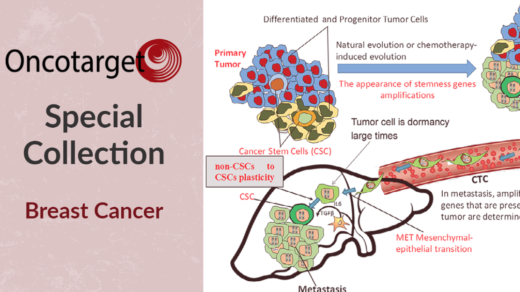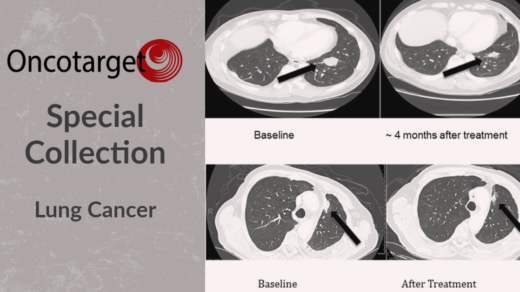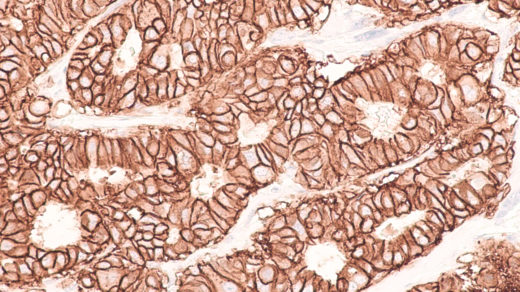
A recent breakthrough medical study has revealed that exercise has been proven to combat breast cancer. The paper, entitled “Anticancer effect of physical activity is mediated by modulation of extracellular microRNA in blood,” was recently published in a June 2020 issue of the free online open-access medical journal Oncotarget. It was authored by an international team of medical researchers, headed by Dr. Alessandra Pulliero of the University of Genoa in Italy, and included Doctors Ming You, Pradeep Chaluvally-Raghavan, Barbara Marengo, Cinzia Domenicotti, Barbara Banelli, Paolo Degan, Luigi Molfetta, Fabio Gianiorio, and Alberto Izzotti.
The paper has already received widespread acclaim and coverage, reproduced online by prestigious organizations such as the National Center for Biotechnology Information (a branch of the U.S. National Institutes of Health), the American Association for the Advancement of Science, and ResearchGate.
THE STUDY
While previous medical studies have shown that physical activity reduces the risk of cancer, particularly breast cancer, it’s been a mystery up to now exactly how this happens. Medical researchers have long suspected that this healing process is triggered by microRNAs, cellular fragments of RNA (ribonucleic acid) also known as miRNAs.
What’s RNA? Like DNA (deoxyribonucleic acid), RNA is one of the building blocks of life. It acts as a messenger transmitting instructions that control the synthesis of proteins. MicroRNAs stop a particular protein from being produced by binding to, and then destroying, the messenger RNA that would have produced this protein.
It is known that miRNAs are incredibly important when it comes to carcinogenesis (the creation of cancer) and cancer outcomes. In addition, MiRNAs regulate the creation of muscle tissueand muscle mass, and it’s been learned that structured exercise controls the creation of miRNA, especially in skeletal muscle.
The research team endeavored to test how exercise in breast cancer patients changed the production of miRNA in their bodies. To begin, 30 women from northern Italy between 54 and 78 years old walked for 45 minutes on the treadmill under identical conditions. Blood samples were taken from them both before and after the exercise sessions.
THE RESULTS
A technique known as microarray analysis revealed that structured exercise modified 14 different extracellular miRNAs related to cancer. Structured exercise caused all these miRNAs to decrease, except for a miRNA called miR-206, which increased. The researchers discovered that the most striking effects induced by exercise were changes in two miRNAs involved in breast cancer progression.
When the researchers investigated the biological effects of these two miRNAs on human breast cancer cells, they conclusively learned that working together, the changes in these two microRNAs activated by a physical exercise program suppressed breast cancer cells. Since too many miRNAs are linked to triggering inflammation and the creation of lymphocytes (white blood cells in the lymph system, which can influence breast cancer), the researchers also believe that structured exercise might reduce inflammation by modulating miRNA in the blood.
They also found that structured exercise improved blood pressure and glucose levels (cancerous tumors feed on glucose) among participants. The doctors discovered that these improvements in blood pressure and glucose levels helped regulate the miRNAs being studied, and in turn helped the miRNAs combat cancer.
This international team of researchers is confident that by testing for the levels of these miRNAs in patients’ blood, they’ve achieved a non-invasive way of establishing biomarkers (a measurable sign of whether a disease is present or how severe it is) to prevent breast cancer. This is potentially a significant breakthrough in breast cancer prevention and treatment.
As a result of this study, the medical community now knows that structured exercise fights breast cancer, and it’s been given a non-invasive way to diagnose and battle breast cancer—and possibly other forms of cancers as well.
ABOUT ONCOTARGET
This important study was able to be published, and noticed so quickly, because it was made available by Impact Journals’ free, open-access cancer research journal Oncotarget. Currently, over 20,000 Oncotarget papers are also searchable on PubMed, a widely used free search engine for life sciences and biomedical research.
Because Oncotarget is open-access, it is free for everyone in the world to read. Most medical journals charge authors for publishing their work, and then in turn charge readers to access what could be all-important, life-saving information. With its revolutionary publishing model, Impact Journals, through publications like Oncotarget, makes it easy for anyone with important medical discoveries to communicate them to the public in the fastest and most effective way possible—possibly saving, prolonging, and improving many people’s lives in the process.
With the goal of a life without disease, Impact Journals allows scientists to share their exceptional discoveries, offers services that enable rapid dissemination of results, and presents vital findings from the many fields of biomedical science. It shares scientific findings through a comprehensive publication process entailing peer review, manuscript preparation, and publication promotion.
In addition, Oncotarget is well-known for publishing papers by Nobel Prize winners. The 2019 Nobel Prize in Physiology or Medicine was awarded jointly to Oncotarget Editorial Board members William G. Kaelin Jr., and Gregg L. Semenza for their discoveries of “how cells sense and adapt to oxygen availability,” which can help us understand and potentially treat a range of conditions like cancer, heart attack, stroke, and anemia. (They shared the Prize with UK physician-scientist Sir Peter J. Ratcliffe.) Both William G. Kaelin and Gregg L. Semenza are founding members of Oncotarget, where Gregg L. Semenza has published eight papers.
Another notable Oncotarget Nobel Prize winner is endocrinologist Andrew V. Schally, a member of Oncotarget’s Editorial Board who won the Nobel Prize in Physiology or Medicine in 1977 and who has published 12 papers in Oncotarget. Of Oncotarget’s work, he remarked: “Oncotarget is an outstanding and most important journal in the field of oncology and cancer research. Oncotarget is performing an extremely useful function for those of us working not only in cancer research, but also on other important topics in the field of medicine. Oncotarget deserves strong support from investigators working in the area of oncology as well as from the National Institutes of Health (NIH).”
If you would like to be first to learn about some of the most exciting new discoveries in medical science, consider investigating the groundbreaking work being published by Impact Journals, including its flagship publication, Oncotarget.



